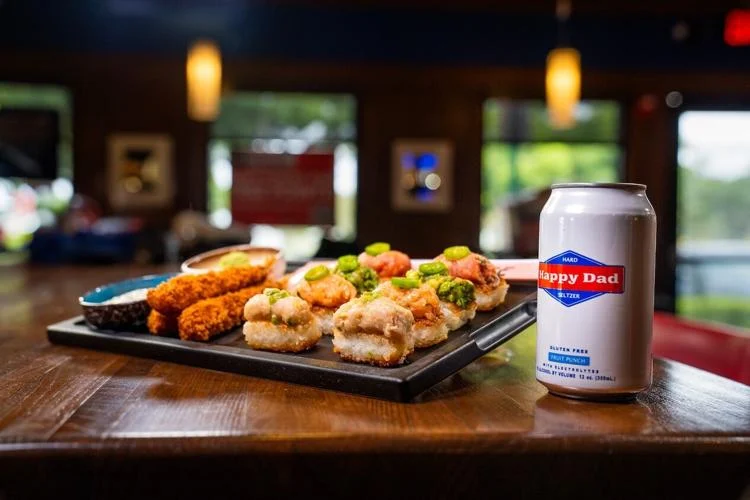Editor’s note: Brandon Coleman, who TGI Fridays promoted to CEO in August, has resigned for personal reasons, the company announced October 31. Weldon Spangler, a longtime TGI Fridays board member, has been appointed CEO effective immediately. Spangler “will lead implementation of the growth plan to revitalize the iconic brand on a global scale,” the company said.
TGI Fridays expects to generate millions in incremental revenue annually from the addition of a menu item CEO Brandon Coleman said gives the brand “a cool factor.” Through an expanded partnership with digital restaurant firm C3, the casual dining chain is putting sushi from Krispy Rice on the menu at more than 140 TGI Fridays restaurants as it aims to appeal to new generations of consumers.
TGI Fridays began its rollout of Krispy Rice, created by the team behind upscale sushi concept Katsuya, in the fall of 2021 as a virtual brand in a handful of markets. It’s now “front and center” on the menu, said Coleman, and serves to help the company modernize its offerings.
“It’s an incredible product. We looked at sushi as a new line of business for us,” said Coleman, who was promoted to CEO in August after less than a year as Fridays’ chief marketing officer and U.S president. “The U.S. consumer has really adopted sushi as an everyday occasion,” and the company saw over the past two years Krispy Rice was not only increasing customer spend but also driving traffic.
This next expansion push is to more corporate restaurants, and franchisees will soon have access to Krispy Rice as TGI Fridays aims to make it available at more than 300 locations over the next year. The company is targeting a $163 million annual run rate for Krispy Rice, or about $540,000 per store.
Kumi and Stonie Bowls, two more Japanese concepts from C3, are also available for delivery from TGI Fridays restaurants, with plans to put them on the menu for in-store ordering next year. Fridays owner TriArtisan Capital Advisors invested in C3, owned by hospitality mogul Sam Nazarian, in 2021.

C3 CEO Sam Nazarian
Nazarian said the next evolution of virtual brands involves “bringing the experience in-store,” which is also what he’s doing through C3’s Citizens food halls and markets. “It’s not just about delivery, which is hard to make profitable,” said Nazarian, who this summer acquired Nextbite, one of the leading virtual brand providers created by Ordermark founder Alex Canter.
“I think the big lesson here is as casual dining is pivoting to more QSR, how can two brands come together and inject more relevancy into a legacy brand like TGI Fridays,” he said. Fridays, he continued, “has been on the forefront of innovation” and is committed not only to deploying Krispy Rice to help amplify its own brand but also ensure quality execution, which is where a lot of restaurants fall short in their quest to capture sales via virtual menus.
“They took this and mastered it,” he said of Fridays. “In-store sales, that’s really where the profit comes from.”
TGI Fridays, a 58-year-old brand which has nearly 700 restaurants in 51 countries, has seen its U.S. store count decline since 2020, when it had 384 locations at the start of the year. Its unit count at the end of 2022 was 292. It’s an “incredible” brand, said Coleman, one with “a lot of nostalgia and latent brand affinity.” His goals now are “all about relevancy.”
“We have to have an everyday audience,” he said, and the brand is emphasizing its bar roots by adding other new products, such as Happy Dad Hard Seltzer and banana-flavored whiskey from Howler Head, plus non-alcoholic options from Athletic Brewing Company. The company last week launched a reimaged appetizer lineup to add more variety to its standards of wings, mozzarella sticks and loaded potato skins. Among the 18 different options, which start at $3, are a margarita shrimp cocktail, truffle tot-chos, steakhouse meatballs and loaded poblano queso.
Customers, said Coleman, want more small plates, more diversity and opportunities to try new items. “We’re moving on all fronts,” he said.


